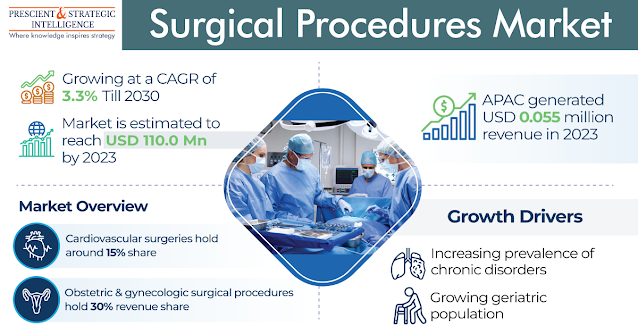According to the latest market research study published by P&S Intelligence, the U.S. hysteroscopes market is poised for significant growth, with projections indicating an increase from $119.7 million in 2024 to $165.9 million by 2030, reflecting a compound annual growth rate (CAGR) of 5.7%.
 |
| Get Your Free Sample Report Here |
This expansion is largely driven by the rising prevalence of gynecological disorders. Abnormal uterine bleeding affects up to 40% of women of reproductive age and up to 50% of perimenopausal females. Additionally, uterine fibroids are found in 20–80% of women by age 40, with higher rates among African American females. Polycystic ovary syndrome affects 6–12% of females of reproductive age, and endometriosis impacts approximately 10% of women worldwide, further contributing to the demand for hysteroscopic procedures.
Technological advancements in hysteroscopy, such as
high-definition optics, miniaturized instruments, and enhanced imaging
technologies, have improved diagnostic accuracy and therapeutic outcomes. The
increasing preference for minimally invasive procedures, offering quicker
recovery times and reduced risks compared to traditional surgeries, also
propels market growth.
Key Insights
- Segmentation
Analysis: The market is segmented by type into flexible and rigid
hysteroscopes, with rigid hysteroscopes currently holding a larger market
share. By usability, the market is divided into single-use and reusable
hysteroscopes, with reusable devices being more prevalent due to
cost-effectiveness. In terms of application, the market is categorized
into surgical and diagnostic uses, with diagnostic applications expected
to witness faster growth due to the increasing need for early detection of
gynecological conditions.
- Regional
and Geographical Trends: The U.S. market is experiencing growth across
various regions, with a notable increase in outpatient and ambulatory
surgery centers equipped with advanced hysteroscopic technologies,
enhancing patient access and convenience. Positive reimbursement policies
and a significant aging female population, particularly those entering
menopausal and post-menopausal phases, further support market expansion.
- Technological
Advancements Shaping the Market: Innovations in hysteroscopy have
significantly enhanced procedural capabilities. Developments such as
high-definition optics, miniaturized instruments, and improved imaging
technologies have led to better diagnostic accuracy and therapeutic
outcomes, making hysteroscopy a preferred option for both diagnostic and
treatment purposes.
- Competitive
Dynamics, Major Players, and Emerging Opportunities: The U.S.
hysteroscopes market is fragmented, with several key players contributing
to its growth. The increasing adoption of minimally invasive procedures
and the expansion of outpatient and ambulatory surgery centers present
significant opportunities for market players to introduce innovative
hysteroscopic technologies and expand their market presence.

















